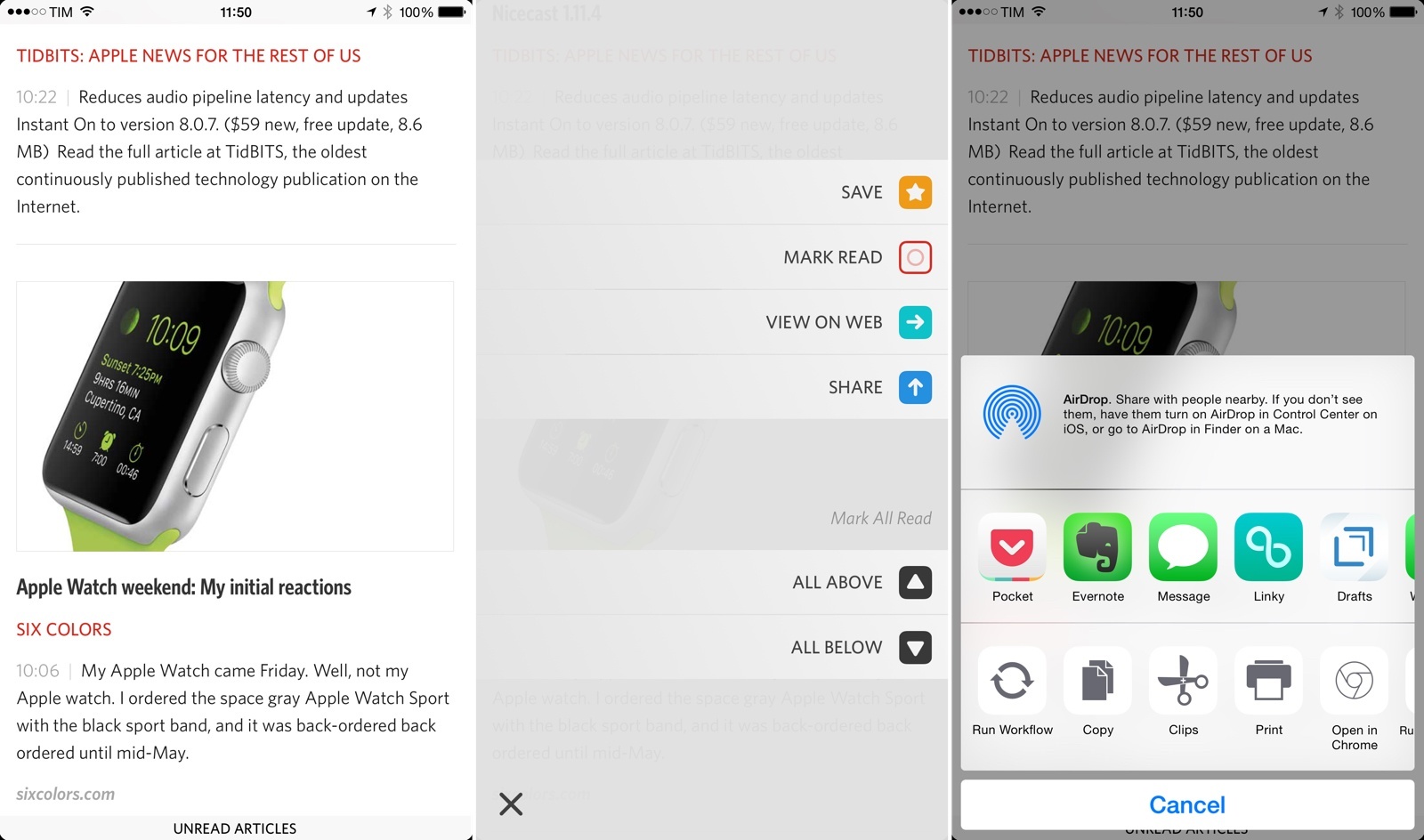With the Apple Watch now in the hands of customers, some smart people have started commenting on the device and sharing their first impressions.
A recurring theme in my RSS feeds today has been the wish for third-party additions to complications and watch faces.
The third-party story is going to be huge as time goes on. Current third-party apps are okay, but they’re incredibly limited. With some of Apple’s built-in apps, you can get a better sense of what might be possible on this device. But I have to admit, I’m most excited by the idea of third-party watch faces or, at the very least, third-party complications for existing watch faces. I’m not convinced that developers will make pretty watch faces—I’ve seen all the awful third-party Pebble faces—but I do want more variety in my watch faces. I’d be fine if Apple took a strong hand with faces and only approved a very small number that passed a very high bar. But I’d be okay if Apple kept tight control of the faces… if developers could provide data from their apps as complications on existing faces. I’d love to plug in my Weather Underground temperature, for instance—today Apple’s standard temperature widget was a full ten degrees off of the actual temperature in my town.
Casey Liss shared similar thoughts:
Like third-party watch faces, I think third-party complications could take a turn toward awful. However, with a light hand and an eye toward brevity, allowing third parties to create their own complications could make an already impressive information appliance even more useful.
And here’s Abdel Ibrahim:
I still believe that apps on Apple Watch are mostly meant to be repositories. The idea of pressing in the Digital Crown and tapping a tiny icon to get to the home screen and launch an app still makes little sense to me. As of right now, the future of the Watch seems to me to be in meaningful Glances, Notifiations, Faces, and Complications (provided Apple allows the latter two). In some cases, like with Uber for example, I can see the need for launching an app. But in most cases, I still don’t see why I should bother.
Between WatchKit and the lack of personalization in some areas of the software, initial limitations of the Watch are creating a whole crop of low-hanging fruit for the next few years.


